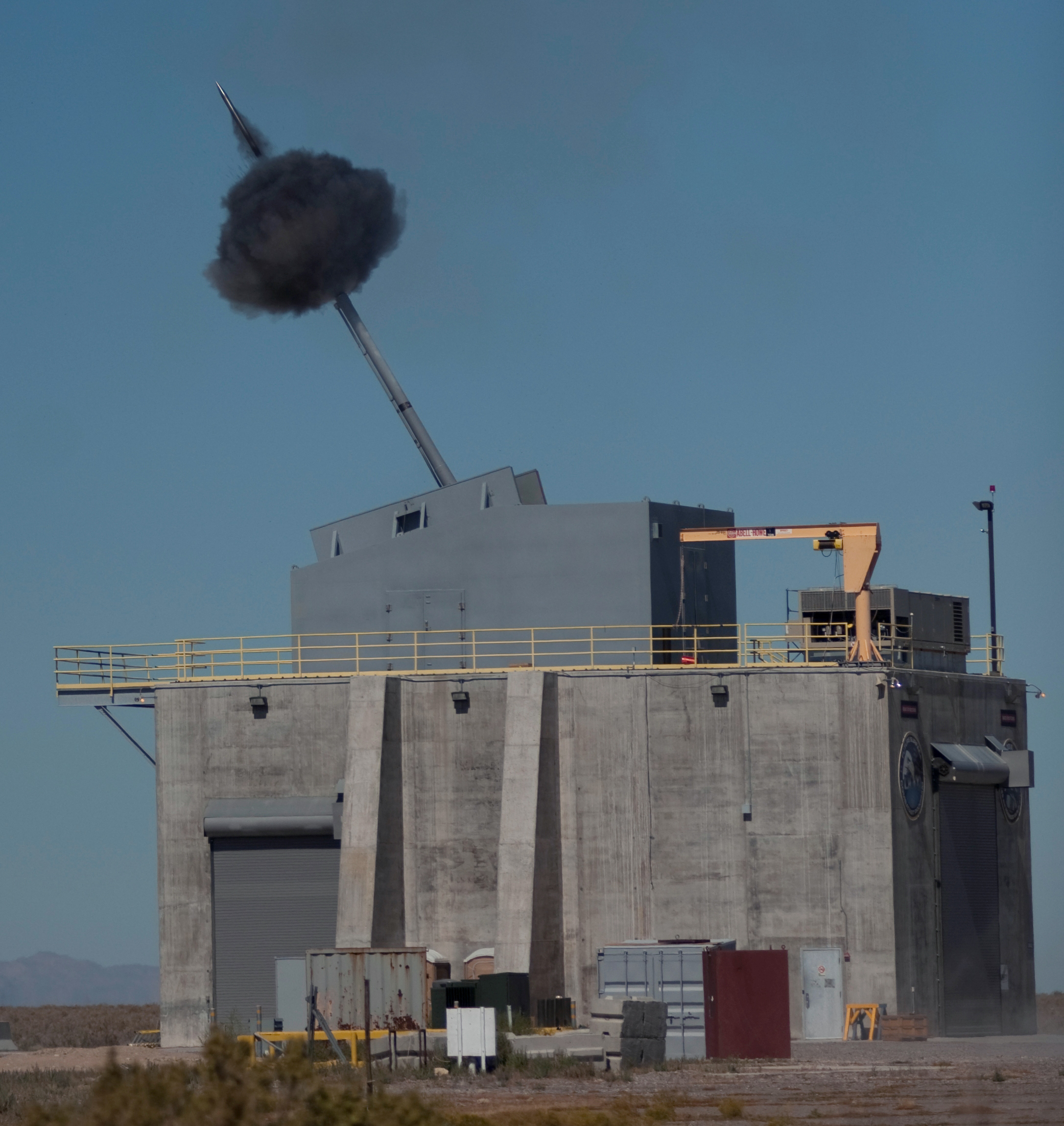One of the most aspirational projects of the US Navy, the Zumwalt-class Destroyer, which has been marred with issues and cost overruns, is now set for a massive upgrade. The three destroyers of the class are set to be the first to be armed with Long-range hypersonic weapons.
Mississippi-based shipyard Huntington Ingalls Industries (HII) will soon complete the installation of the nation’s first long-range hypersonic weaponry on the Zumwalt-class warships, USNI News reported.
The Navy has chosen Ingalls Shipbuilding for a dry-dock period for the guided-missile destroyers USS Zumwalt (DDG-1000) and USS Michael Monsoor (DDG-1001), according to an August 12 pre-solicitation notice from Naval Sea Systems Command.
“The modernization scope of the effort will require specialized yard cranes for greater lift capacity, dry-dock facilities, covered assembly areas, and dedicated fabrication shops,” reads the notice. “Use of an alternative source, other than HII, would result in the unacceptable ship and program schedule delays and would produce adverse impacts to the DDG 1000/1001 operational requirements,” the report says.
The announcement didn’t specify availability dates, but Capt. Matthew Schroeder, program manager for the DDG-1000 at the Program Executive Office, Ships, said in March that the upgrade phase to equip Zumwalt with hypersonic missiles will begin in October 2023.

The mainstay of these Zumwalt-class destroyers is the Advanced Gun System (AGS), a naval artillery system developed to provide long-range gunfire support against shore-based targets. A total of six of the systems were installed, two on each of the three Zumwalt-class ships.
However, it soon ran into trouble. Only the ammunition created solely for AGS could be used on it. Only one ammunition type was designed, and the Navy halted its procurement in November 2016 due to cost overruns. It became a defense project with a 17% cost overrun from $12 billion to $14 billion.
Eventually, the number of vessels planned was reduced from 32 to only three. Even though there were calls to do away with these vessels, the US Navy decided to keep them.
Ironically, hypersonic missiles will take the place of the Advanced Gun System (AGS), the distinctive component of the vessel.
Zumwalt: From Rockets To Hypersonic Missiles
It was revealed earlier this year that the Navy would replace the two 155mm Advanced Gun System mounts on each ship with tubes to fit the Common Hypersonic Glide Body (C-HGB) Vertical Launch System developed for Army, Air Force, and Navy.
A source accessed by USNI News said that the AGS mounts would be removed during the time frame specified in the August 12 notice.
The AGS, which extends several floors below the ship’s bow and houses the magazines for the rocket-launched Long Range Land Attack Projectile, was designed around the 16,000-ton ships. After the LRLAP program was canceled in 2016, the Navy abandoned the idea.

According to a plan presented by Chief of Naval Operations (CNO) Admiral Mike Gilday, the two tubes for the Common-Hypersonic Glide (C-HGB) were initially intended to be installed on the port starboard sides of the ship without removing the two 155-mm AGS gun mounts.
To make room for the C-HGB, which is much larger than any missile in the USN inventory, the entire section of five platforms—two gun chambers, the loading system, transfer carts, and ammo—will have to be taken down by October 2023.
The EurAsian Times had earlier described the vessel’s issues, including its distinctive “tumblehome” hull, which was considered unstable and may topple over if a wave struck the ship at the correct sea state, angle, and speed. In addition, the groundbreaking Integrated Power System (IPS) has software faults that result in several operational concerns.
Frustrated by these troubles and the unsustainability of keeping the Zumwalt-class vessels, the Navy finally decided to convert the Zumwalts from littoral and shallow waters capable of land-attack amphibious support vessels to blue-water strike platforms in 2017.
However, with the need for hypersonic weapons gaining traction, it finally settled on removing these stealthy angular turrets and ammunition hull magazines to install the Conventional Prompt Strike (CPS) hypersonic missiles vertical launch system (VLS) tubes.
“We are removing the guns, the upper and lower gun rooms. That includes the loading system, the transfer carts, the ammo, etc.,” Schroeder told USNI News in the March interview. “[We’re] going down about five platforms to accommodate the height of the missile, which is significantly larger than other missiles in the inventory.”
According to a statement released by the Department of Defense, the Common-Hypersonic Glide Body, or C-HGB, was launched and traveled at hypersonic speed to “a targeted impact point.”
It was revealed that the weapon’s warhead, guidance system, cabling, and thermal protection shield would all be included in the C-HGB. Each service will build weapon systems, such as launchers that can fire weapons from land or sea, using the C-HGB as a base.
US Navy Going Hypersonic
The US’ Long Range Hypersonic Weapons are a direct response to rival nations’ hypersonic missiles, some of which are mounted on land-based wheeled Transporter Erector Launchers (TELs), inside VLS tubes on warships, or carried beneath bombers and vary in diameter, weight, and dimensions, like the Chinese hypersonic YJ-21 anti-ship Ballistic Missile.
The Long-Range Hypersonic Weapon (LRHW) of the United States Army and the CPS of the Navy are the same missiles, according to Naval News. The US Navy said it must deploy an air-launched, air-breathing hypersonic anti-ship cruise missile by 2028. The service claims this weapon will be essential in fending off growing threats from potential enemies like China and Russia.
In the previously released documents associated with the Navy’s budget proposal for the fiscal year 2023, the Hypersonic Air-Launched Offensive Anti-Surface Warfare Missile, or HALO, is extensively discussed.

The US Navy has also been directly involved in at least one experimental air-launched hypersonic missile program directed by the United States Air Force and performed under the aegis of the Pentagon’s Joint Hypersonic Transition Office.
The Navy plans to deploy the weapons on destroyers by 2025 and Virginia-class nuclear-powered attack submarines by 2028.
Chief of Naval Operations Adm. Mike Gilday said last year that the Zumwalts would be the first platform to field hypersonics ahead of the planned inclusion of the weapons on the submarine force.
“Zumwalt gave us an opportunity to get [hypersonics] out faster, and to be honest with you, I need a solid mission for Zumwalt,” Gilday told USNI News during an interview earlier this year.
- Contact the author at sakshi.tiwari9555@gmail.com
- Follow EurAsian Times on Google News




